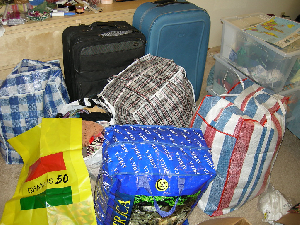The Government has set aside GH¢400 million, with an additional funding of $14.0 million from the Africa Development Bank, towards the establishment and operationalisation of the Ghana Incentive Base Risk Sharing System for Agricultural Lending (GIRSAL), next year.
This system would to help manage the risks and stimulate private sector lending to the agricultural sector by providing guarantees to promote commercial bank lending.
Mr Ken Ofori-Atta, Minister of Finance, announced this when he presented the 2019 Budget Statement and Economic Policy of the Government to Parliament, The Budget is on the theme: “A Stronger Economy for Jobs and Prosperity”.
He said the Government would launch the livestock model of Planting for Food and Jobs dubbed: "Rearing for Food and Jobs" (RFJ) with the objective of increasing the production of selected livestock, especially poultry.
The Government, he said, believed that the country could leverage the PFJ and RFJ programmes and other efforts in agriculture to reduce the large food imports.
He said following a year of implementation of the PFJs Programme, the agricultural sector witnessed a growth rate of 8.4 per cent in 2017 and this was after almost a decade of erratic sector performance with an average growth rate of 3.4 per cent.
Mr Ofori-Atta said on account of this massive success, the Government implemented an expanded version of the PFJ in 2018, with more ambitious targets.
He said compared with a target of 500,000 farmers, a total of 577,000 farmers were supplied with subsidised fertilisers and seeds for the 2018 cropping season. “We expect another highly successful year and in 2019, we plan to expand the programme to cover a million farmers.”
The Minister said as a country, “we spend over $2 billion every year importing food, for example, we import over a billion dollars of rice, $ 320 million of sugar, and $374 million of poultry.”
He said most of these the country could produce here in Ghana; creating jobs and saving foreign exchange.
It was, therefore, a key goal of the Government, he said, to replace a significant fraction of these imports with domestic production in the medium-term.
He said in the case of rice, the strategy was to increase volumes through increased yields of rice by expanding production areas in irrigated schemes, valleys and low lands around the country.
Mr Ofori-Atta said this strategy would be underpinned by making available to farmers, improved and certified seeds, subsidised fertilizers, enhanced access to mechanised harvesters to reduce post-harvest losses due to traditional labour-intensive threshing, and encourage private sector investment in milling facilities.
“This will ensure that the quality of locally processed rice will be at par with imported rice,” he added.
In the case of poultry, the Minister said about 70 per cent of the cost of production was from feed, which in turn was primarily determined by the cost and availability of maize and soya bean.
He said in order to bring down the cost of feed and make poultry production competitive, the Ministry of Food and Agriculture was working on a programme to sustainably boost soybean production through the provision of improved and certified seeds, subsidised fertilisers and harvest equipment to reduce field losses.
The Minister said adequate good storage for agricultural produce was a challenge that the country must address to avoid a situation, where the increased agricultural production arising from the support to farmers would end up going to waste.
“In 2019, Government expects to increase its warehouse storage capacity by around 80,000 metric tonnes,” he said.
On World Cocoa prices, he said the prices remained low after declining by about a third in the 2017/2018 season.
However, despite the significant decline, the Government maintained the producer price at GH¢7,600.00 per tonne to ensure that farmers did not suffer loss of income and purchased 904,000 metric tonnes of cocoa in the 2017/18 season.
He said Ghana needed to add value to its Cocoa output and Ghana, adding that, together with Cote d’Ivoire, they produced about 60 per cent of the world's Cocoa.
“But we earn only $6 billion of the world Cocoa value chain earnings of $125 billion—just about five per cent,” he pointed out.
Through the Ghana-Cote d'Ivoire Cocoa Initiative, the Government, he said, was working on several fronts to increase the value they gained from Cocoa.
They include: Vigorously promoting both domestic and international cocoa consumption; and initiatives for market expansion for exports of cocoa products to Asia; and provision of incentives to the private sector to set up cocoa processing factories.
The Minister said the Government, had also as part of its strategy, to revamp the agricultural sector by placing focus on the tree crop subsector.
“Cabinet has approved the formation of a Tree Crop Development Authority (GTCDA) to regulate and create a favourable environment for the growth and development of that sector,” he said.
The Authority will initially regulate the cashew, sheanut butter, oil palm and the rubber crop sub-sectors, with other tree crops being added as and when necessary.
Business News of Thursday, 15 November 2018
Source: ghananewsagency.org













